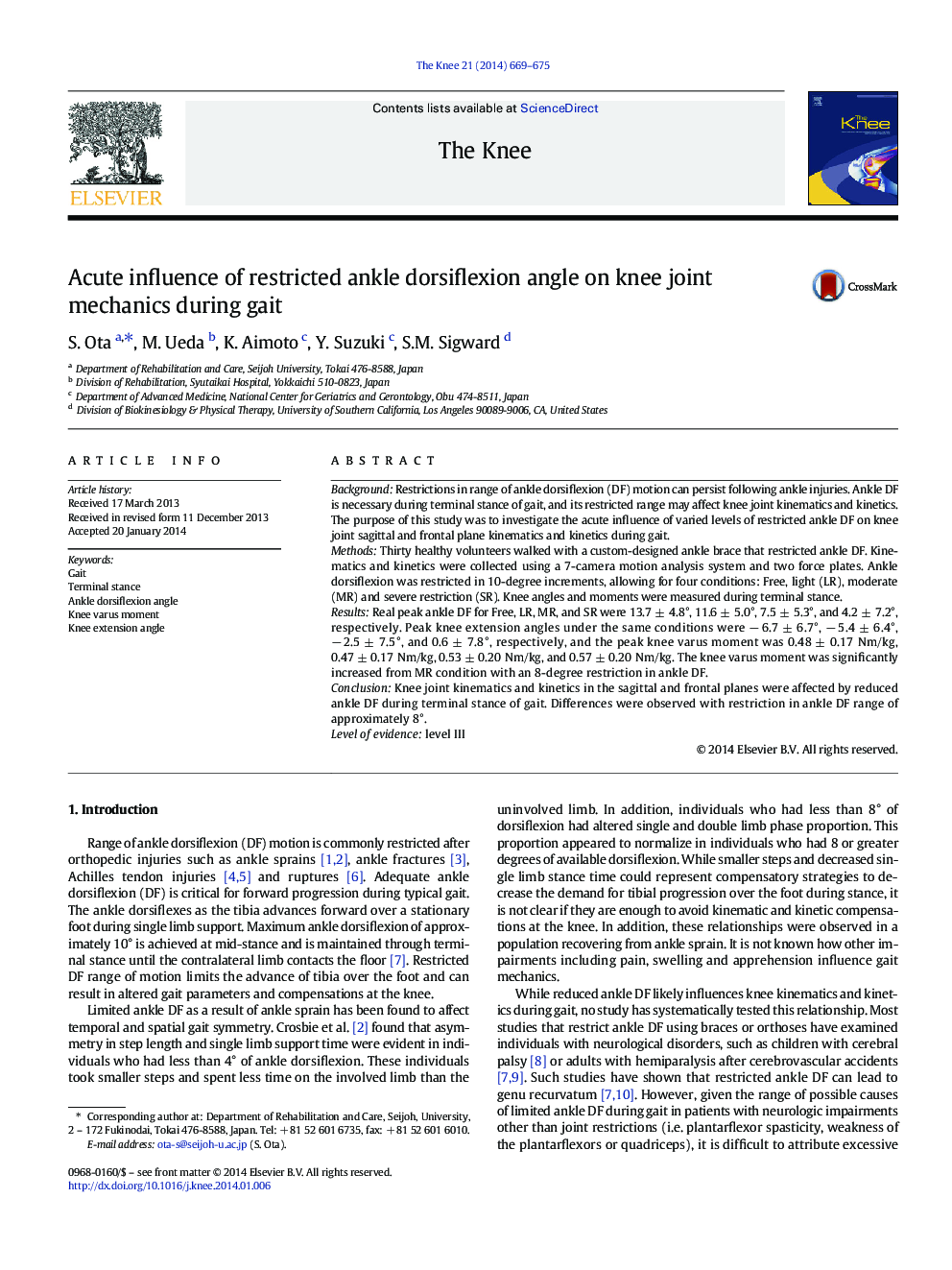| Article ID | Journal | Published Year | Pages | File Type |
|---|---|---|---|---|
| 4077455 | The Knee | 2014 | 7 Pages |
BackgroundRestrictions in range of ankle dorsiflexion (DF) motion can persist following ankle injuries. Ankle DF is necessary during terminal stance of gait, and its restricted range may affect knee joint kinematics and kinetics. The purpose of this study was to investigate the acute influence of varied levels of restricted ankle DF on knee joint sagittal and frontal plane kinematics and kinetics during gait.MethodsThirty healthy volunteers walked with a custom-designed ankle brace that restricted ankle DF. Kinematics and kinetics were collected using a 7-camera motion analysis system and two force plates. Ankle dorsiflexion was restricted in 10-degree increments, allowing for four conditions: Free, light (LR), moderate (MR) and severe restriction (SR). Knee angles and moments were measured during terminal stance.ResultsReal peak ankle DF for Free, LR, MR, and SR were 13.7 ± 4.8°, 11.6 ± 5.0°, 7.5 ± 5.3°, and 4.2 ± 7.2°, respectively. Peak knee extension angles under the same conditions were − 6.7 ± 6.7°, − 5.4 ± 6.4°, − 2.5 ± 7.5°, and 0.6 ± 7.8°, respectively, and the peak knee varus moment was 0.48 ± 0.17 Nm/kg, 0.47 ± 0.17 Nm/kg, 0.53 ± 0.20 Nm/kg, and 0.57 ± 0.20 Nm/kg. The knee varus moment was significantly increased from MR condition with an 8-degree restriction in ankle DF.ConclusionKnee joint kinematics and kinetics in the sagittal and frontal planes were affected by reduced ankle DF during terminal stance of gait. Differences were observed with restriction in ankle DF range of approximately 8°.Level of evidencelevel III
